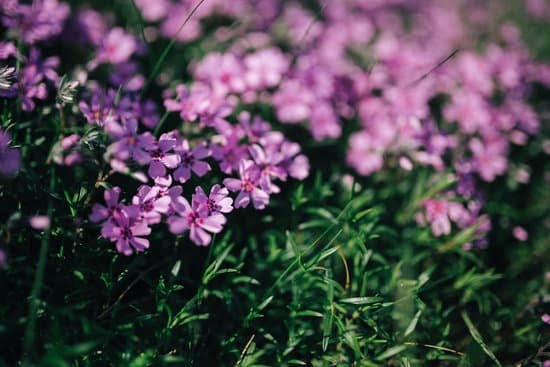Are you looking to enhance your landscaping with a unique and low-maintenance garden design? Look no further than gravel gardens. In this article, we will explore planting ideas for gravel gardens and provide a comprehensive guide on creating an aesthetically pleasing and functional outdoor space. Gravel gardens offer numerous benefits, from water conservation to ease of maintenance, making them an increasingly popular choice for modern landscape designs.
Gravel gardens are a type of garden design featuring a predominance of gravel as the main ground cover, with minimal soil. This style of gardening is favored for its ability to thrive in dry climates and low-water conditions, making it an ideal choice for eco-conscious gardeners. In addition to their practicality, gravel gardens also offer a sleek and modern aesthetic, adding visual interest to any outdoor space.
Before diving into the specifics of planting in gravel gardens, it’s essential to understand the basics of this unique landscaping style. From selecting the right type of gravel to choosing drought-tolerant plants and incorporating decorative elements, there are many factors to consider when designing a gravel garden.
Whether you’re a seasoned gardener or just starting out, this guide will provide valuable insights and inspiration for creating your own stunning gravel garden. So let’s get started on this exciting journey towards transforming your outdoor space.
Choosing the Right Gravel
When it comes to creating a gravel garden, choosing the right type and color of gravel is essential for achieving the desired aesthetic and functionality. There are several options available, including pea gravel, crushed rock, river rock, and more. Each type has its own unique properties and can contribute to the overall look and feel of the garden.
Pea gravel is a popular choice for its smooth, round texture and natural appearance. It is typically available in earthy tones such as beige, tan, and gray, making it a versatile option for various garden designs.
On the other hand, crushed rock is more angular in shape and tends to pack down tightly, providing excellent stability for pathways and borders. River rock is known for its larger size and comes in a range of colors from white to black, adding visual interest to the garden.
When selecting the best option for your particular garden design, consider factors such as color scheme, maintenance requirements, and intended use. Light-colored gravels can help brighten up shady areas while dark-colored gravels can create a striking contrast or provide a dramatic backdrop for plants. Additionally, consider the texture of the gravel – smooth vs rough – based on foot traffic or use in seating areas.
Utilizing different types of gravel within one design can also add an interesting visual element to your gravel garden. Mixing colors or layering different sizes of gravel can create depth and dimension in your landscaping project. The key is to select gravels that complement each other while enhancing the overall aesthetic appeal of your outdoor space.
| Gravel Type | Properties |
|---|---|
| Pea Gravel | Smooth, round texture; earthy tones; versatile option |
| Crushed Rock | Angular shape; packs down tightly; excellent stability for pathways |
| River Rock | Larger size; range of colors from white to black; adds visual interest |
Ultimately, selecting the right gravel for your garden will depend on your personal preferences as well as practical considerations such as drainage needs and local availability. With careful consideration and planning, you can choose gravels that will enhance the beauty and functionality of your gravel garden while creating a cohesive landscape design that meets your specific needs.
Essential Tools and Materials
When it comes to planting in gravel gardens, having the right tools and materials is essential for the success of your garden. From proper soil amendments to effective drainage materials, there are several key items you’ll need to ensure that your plants thrive in this unique environment.
Soil Amendments
Since gravel gardens typically have poor soil quality, it’s important to amend the soil before planting. Adding organic matter such as compost or peat moss can help improve the soil structure and fertility, providing a healthy foundation for your plants to grow. Additionally, incorporating slow-release fertilizers can provide nutrients to the plants over an extended period, promoting strong and healthy growth.
Drainage Materials
One of the main benefits of gravel gardens is their excellent drainage properties. To enhance this feature, it’s important to include drainage materials such as gravel or crushed stones beneath the surface of the soil. This helps prevent waterlogging and ensures that excess water can easily drain away, creating an ideal growing environment for drought-tolerant plants.
Other Essential Tools
In addition to soil amendments and drainage materials, there are several other essential tools you’ll need for planting in gravel gardens. These may include a shovel or trowel for digging, a rake for leveling the gravel surface, and landscaping fabric to help suppress weeds. It’s also important to have gloves and protective gear to ensure safe and comfortable gardening experience.
By ensuring that you have these essential tools and materials on hand, you can create a thriving gravel garden that not only looks beautiful but also provides a low-maintenance and sustainable landscaping solution. With proper soil amendments, effective drainage materials, and the right tools at your disposal, you’ll be well-equipped to embark on your planting journey in a gravel garden.
Designing Your Gravel Garden
Gravel gardens offer a unique and visually appealing landscaping option that can be both beautiful and practical. When it comes to designing your gravel garden, there are several tips and ideas to consider for creating an aesthetically pleasing and functional outdoor space. One of the key considerations when designing a gravel garden is the layout, including paths, borders, and planting areas. These elements play a crucial role in defining the overall look and feel of the garden.
When it comes to paths in a gravel garden, consider using a combination of materials such as stepping stones, pavers, or even compacted soil to create interesting and visually appealing walkways. These paths not only provide access to different areas of the garden but also add texture and visual interest to the overall design.
Borders in a gravel garden can be created using various materials like bricks, stones, or metal edging. They help define the planting areas and provide structure to the landscape.
In terms of planting areas, gravel gardens offer ample opportunities for creativity. Consider using raised beds or mounds to add dimension and depth to the garden. Incorporating different sizes and shapes of planting areas can create visual interest and allow for a variety of plantings. Remember that proper planning and organization are essential for achieving an aesthetically pleasing result.
To achieve an aesthetically pleasing yet functional gravel garden layout, you need careful consideration before getting started with your project. Ultimately, implementing a well-thought-out design will ensure that your gravel garden is both visually appealing and functional. By considering different options for paths, borders, and planting areas, you can create a unique outdoor space that reflects your personal style while also being practical for ongoing maintenance.
| Element | Consideration |
|---|---|
| Paths | Use combinations of materials for interesting walkways |
| Borders | Create structure with bricks or stone edging |
| Planting Areas | Incorporate raised beds or mounds for variety |
Selecting Drought-Tolerant Plants
When creating a gravel garden, it is essential to select plants that can thrive in this unique environment. Due to the well-draining nature of gravel, it’s important to choose drought-tolerant plants that can withstand dry conditions and minimal water availability. These types of plants are well-suited for gravel gardens as they require less maintenance and watering, making them ideal for low-maintenance landscaping designs.
Here are some suitable options for drought-tolerant plants that can thrive in a gravel garden:
- Lavender: Known for its fragrant aroma and beautiful purple flowers, lavender is a hardy, drought-tolerant plant that thrives in well-drained soil. It adds an elegant touch to any gravel garden design.
- Yucca: With its striking architectural form and tolerance for dry conditions, yucca is a great choice for gravel gardens. It requires minimal water and adds visual interest to the landscape.
- Sedum: This versatile plant comes in various shapes and sizes, making it a perfect addition to gravel gardens. Its succulent leaves store water, allowing it to survive in dry conditions with ease.
In addition to these options, there are many other drought-tolerant plants that can enhance the beauty of your gravel garden while thriving in the unique environment provided by gravel landscaping. By carefully selecting the right plants, you can create a stunning and sustainable garden that requires minimal maintenance while still offering visual appeal.
Planting and Maintenance Tips
Planting and caring for plants in a gravel garden requires special attention to ensure the success of your landscaping design. Follow these step-by-step instructions for a flourishing gravel garden:
1. Prepare the Soil: Before planting, make sure the soil is well-draining by adding a layer of sand or grit under the gravel. This will prevent water from pooling around the plants’ roots.
2. Choose Drought-Tolerant Plants: Select plants that can thrive in dry conditions, such as lavender, yarrow, and sedum. These plants are perfect for gravel gardens as they require minimal water once established.
3. Planting Techniques: Dig holes slightly larger than the plant root balls and mix some compost into the soil before placing the plants. Water them thoroughly after planting to help them settle in their new environment.
4. Mulch with Gravel: Once your plants are in place, mulch the surrounding area with more gravel to help retain moisture, suppress weed growth, and create a cohesive look in your garden.
Maintenance Tips:
– Regularly check for weeds and remove them by hand to prevent them from taking over your gravel garden.
– Prune your plants as needed to maintain their shape and encourage healthy growth.
– Water deeply but infrequently, aiming to mimic natural rainfall patterns instead of frequent light watering.
By following these planting and maintenance tips, you can ensure that your gravel garden remains beautiful and thriving throughout the year.
Creative Landscaping Ideas
Incorporating decorative elements into your gravel garden can elevate its aesthetic appeal and infuse personality into the space. By strategically adding stone sculptures, ornamental grasses, and water features, you can create a unique and visually stunning landscape that complements the natural beauty of the gravel garden.
Stone Sculptures
One creative landscaping idea for gravel gardens is to incorporate stone sculptures. These can range from abstract modern designs to traditional statues, adding an artistic focal point to the garden. When choosing stone sculptures, consider the size and style of your gravel garden to ensure that the pieces complement the overall design. Placing sculptures amidst plantings or along pathways can create visual interest and a sense of whimsy in your gravel garden.
Ornamental Grasses
Another way to enhance your gravel garden is by including ornamental grasses. These plants not only add texture and movement to the landscape but also thrive in the well-drained environment of gravel gardens. Ornamental grasses come in a variety of heights, colors, and textures, allowing you to customize your garden’s look. Consider planting clusters of ornamental grasses along borders or in designated areas to soften the ruggedness of the gravel and create contrast with other plantings.
Water Features
For a truly immersive experience, consider incorporating water features into your gravel garden. Whether it’s a small bubbling fountain or a larger pond, water elements can bring a sense of tranquility and fluidity to the space. The juxtaposition of water against the rough texture of gravel creates an intriguing visual impact. Additionally, water features attract wildlife and contribute to a harmonious ecosystem within your garden.
By including stone sculptures, ornamental grasses, and water features in your gravel garden design, you can transform it into a captivating outdoor oasis that reflects your personal style and creativity.
The addition of these decorative elements enhances the overall ambiance of the space while making it more inviting for both humans and wildlife alike.
Case Studies and Success Stories
In conclusion, gravel gardens offer a unique and visually appealing landscaping option for those looking to create a low-maintenance and drought-resistant outdoor space. By carefully selecting the right type and color of gravel, as well as choosing drought-tolerant plants, gardeners can achieve a striking and sustainable garden design. Additionally, incorporating creative landscaping ideas such as decorative elements and water features can further enhance the beauty of a gravel garden.
One of the key aspects of successful gravel gardening is proper planning and design. By carefully considering pathways, borders, and planting areas, individuals can create an aesthetically pleasing and functional space that requires minimal maintenance. The use of appropriate tools and materials is also crucial for ensuring the long-term health and vitality of a gravel garden.
Furthermore, real-life case studies and success stories serve as inspiration for those interested in embarking on their own gravel gardening journey. These examples not only showcase the potential of this unique landscaping style but also provide practical techniques and ideas that aspiring gravel gardeners can adapt to their own outdoor spaces.
Ultimately, with the right information, plant selection, and design considerations, anyone can create a beautiful and sustainable gravel garden that adds value to their property. Planting ideas for gravel gardens are numerous; it just takes a little creativity and planning to bring them to life.
Frequently Asked Questions
What Plants Grow Best in Gravel?
Plants that grow best in gravel gardens are typically those that thrive in well-draining soil conditions. This includes plants like lavender, yarrow, sedum, and ornamental grasses. These plants can tolerate the drier and more rocky environment that gravel provides.
What Do You Put on a Gravel Garden?
In a gravel garden, it’s important to use a good quality weed membrane or landscape fabric to prevent weeds from growing through the gravel. Additionally, adding a layer of organic mulch on top of the membrane can help improve soil fertility and moisture retention for the plants.
How Do You Plant Flowers in a Gravel Garden?
When planting flowers in a gravel garden, it’s essential to prepare the soil beneath the gravel by loosening it and incorporating organic matter to improve fertility. Dig a hole just large enough for the plant’s root ball, place the plant in the hole, backfill with soil, and water thoroughly.
Adding a layer of mulch around the plants can also help retain moisture and suppress weeds in a gravel garden setting.

Welcome to my gardening blog! I am passionate about plants and enjoy sharing my knowledge and experiences with others. In this blog, I will write about everything related to gardening, from tips on how to get started to updates on my own garden projects.





